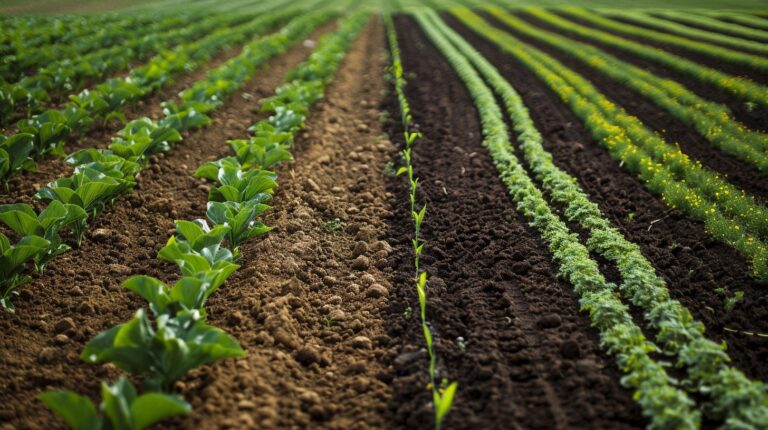The development of new cultivated species and enhanced crop varieties plays a crucial role in boosting agricultural productivity and resilience to environmental stressors. This includes improving crop resistance to diseases, pests, and climatic fluctuations while also enhancing nutritional value.
Introduction of new crop species and diversification strategies requires careful consideration of various factors:
- Resource availability
- Technological access
- Household dynamics
- Market conditions
- Institutional frameworks
- Objectives of introducing new crop species and diversification strategies include:
- Increasing income on small farm holdings
- Withstanding price fluctuation
- Mitigating effects of increasing climate variability
- Balancing food demand
- Improving fodder for livestock animals
- Conservation of natural resources
- Minimizing environmental pollution
- Reducing dependence on off-farm inputs
- Depending on crop rotation, decreasing insect pests, diseases, and weed problems
- Increasing Community Food Security
Importance of Crop Advancement

Crop diversification, integrating new crops or cropping systems into agricultural production, addresses various challenges faced by farmers, such as income augmentation, climate variability management, and natural resource conservation.
Introduction of New Crop Species
Farmers experiment with new varieties, drawing from centuries-old practices, while agricultural researchers facilitate the identification and comparison of new varieties better adapted to changing climatic conditions.
Factors Influencing Crop Diversification

Considerations for Introduction
Several factors influence the successful introduction of new crop species, including resource availability, technological access, household dynamics, market conditions, and institutional frameworks.
Importance of Resource Management
Availability and quality of resources, including irrigation, rainfall, soil fertility, and access to technologies, are critical considerations in the introduction of new crop species.
Contribution to Climate Change Adaptation

Breeding new crop varieties enhances plant resistance to various stresses induced by climate change, ensuring agricultural production can continue and even thrive amidst uncertainties.
Resilience Through Diversification
Crop diversification reduces farmers’ reliance on single crops, mitigating risks associated with unforeseen climate events and enhancing food security through a diversified portfolio.
Advantages and Disadvantages
Benefits of Crop Advancement
Farmer experimentation and participatory research can strengthen cropping systems, increase yields, improve resilience to pests and diseases, and capture new market opportunities.
Limitations and Challenges
However, limitations include the potential limitation of benefits from native varieties and challenges in achieving high yields due to increased crop management complexity.
Financial and Institutional Requirements
Investment Considerations
Financial requirements include costs for researching species, training, infrastructure, and marketing, while institutional support is vital for linking communities to research programs and facilitating access to resources.
Institutional Support
Establishing farmers’ committees and government policies supporting diversification are crucial in coordinating production, accessing financing, and building national and international markets.
Barriers and Opportunities

Challenges to Implementation
Challenges include misconceptions about local species’ productivity and market demand, which can hinder farmers’ adoption of new crop varieties and diversification.
Strategies for Implementation
Opportunities arise in developing market-oriented native species, implementing market development strategies, and fostering partnerships between producers, research institutes, and the private sector.
Real-Life Applications
Farmer experimentation with improved bean varieties in Honduras has successfully reduced disease spread, demonstrating the effectiveness of participatory development processes in enhancing small farmers’ access to improved varieties.
In conclusion, the introduction of new crop varieties and diversification strategies are essential components of agricultural adaptation to climate change. Through farmer experimentation, participatory research, and strategic planning, tailored varieties can enhance resilience and address environmental challenges effectively.












